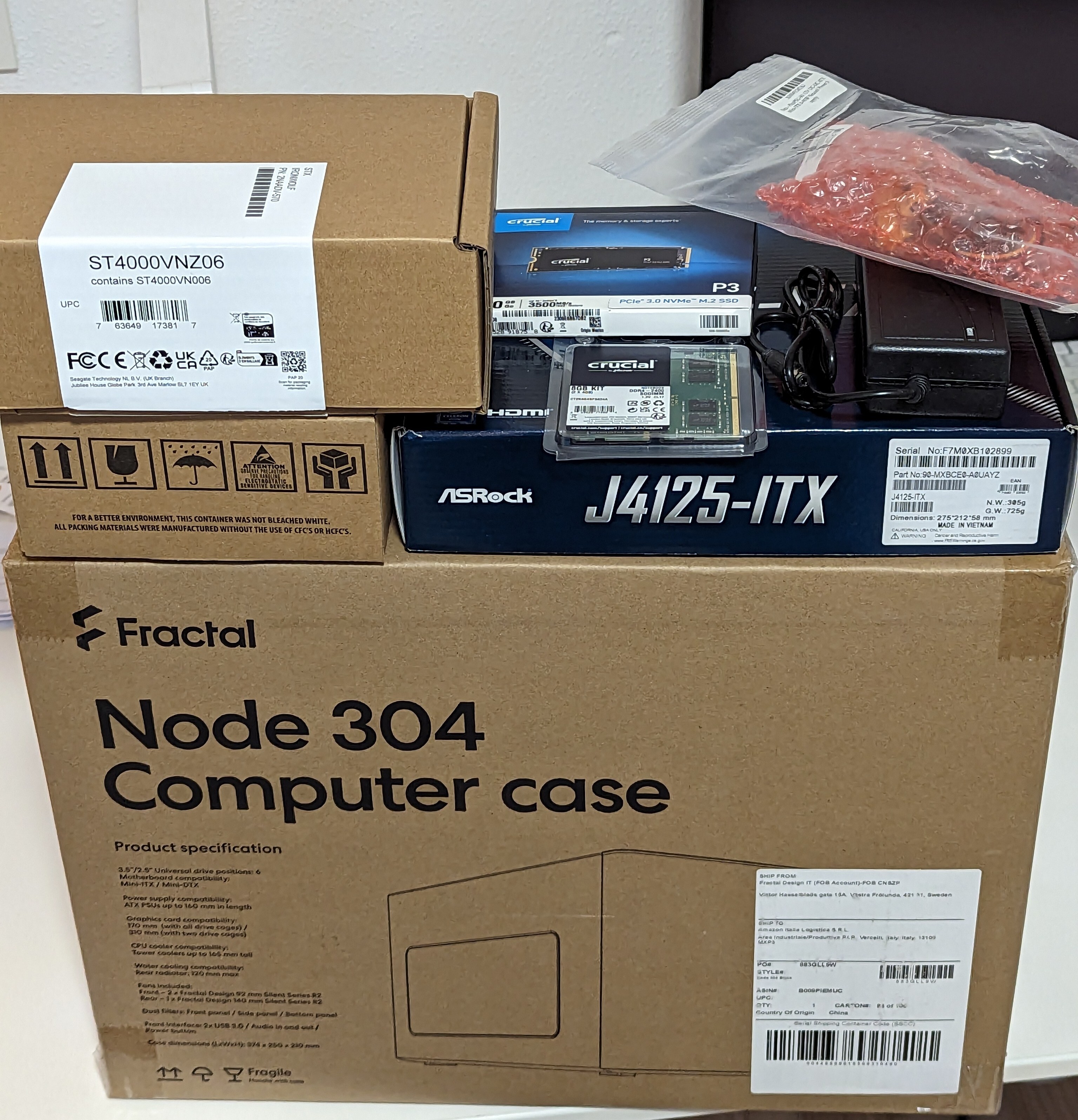I'm building a NAS for the first time on my own, so I wanted to share the story so far here.
I'm not a stranger to custom builds, in fact I don't think I ever bought an assembled PC (not counting second hand 386 box a million years ago). But this is my first small, low power build, so it's not perfect, I already ran into a wall (more later).
I base the build on an AsRock mini-ITX board, the CPU is included, it's passively cooled, low power consumption but still powerful for a NAS. I'm sticking it into a Node 304 Fractal Design case. Here's the full list of parts I got:
- AsRock J4125-ITX board with a Celeron 4125 (4-core CPU)
- 8GB DDR4 RAM (a Crucial kit)
- a 500GB NVMe SSD (which I can't use)
- a couple of Seagate IronWolf 4TB drives
- 90W PicoPSU and some no-name power brick
- Fractal Design Node 304 mini-ITX case.
I planned to have an SSD for OS, these two disks for my photography and media, and then later on expand with more storage (preferably SSD, when I can afford it).
As mentioned, I messed up: the M2 slot on the motherboard is a "Key E" slot. I never bothered with these keys before, so I didn't know that a Key E slot does not have a SATA protocol, it won't take my SSD.
Another thing, the PicoPSU is a 20-pin power supply, and the board has a 24-pin slot. It should still be fine, the specs say that this is still okay, but I'll have to see. According to my back-of-the-napkin calculations, 90 Watts should be enough power for the mobo and CPU, the SSD and the two spinning disks.
Anyway I'll get a regular SATA SSD tomorrow and see how it's shaping up. Let me know if you want me to post more on my progress/end result or if you have any questions.

